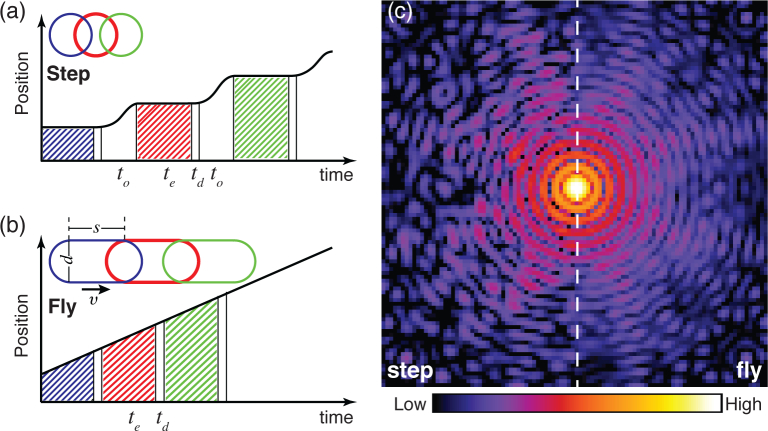Fig. 1.
Comparison of step-scan and fly-scan ptychography. In step-scan mode (a), the probe moves relative to the sample in a move-settle-acquire sequence, where no signal is collected during the move-settle overhead time to; the diffraction pattern is then collected over an exposure time of te, after which the detector becomes inactive for a dead time td for data transfer. In fly-scan mode (b), the probe moves at a constant velocity to the sample while data is acquired over exposure times te followed by brief detector dead times td. Outlines of both step-scan and fly-scan total beam footprints (assuming a round coherent probe with a diameter d) are shown as insets, with s representing the probe motion distance corresponding to the per-flyscan-point acquisition time te. (c) The diffraction intensities measured for scanning the same region in the two scan modes. Speckle visibility is reduced in fly-scan mode.

